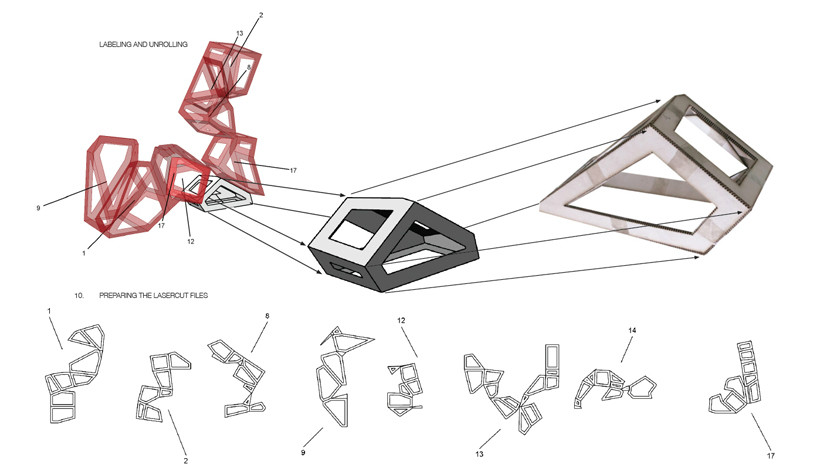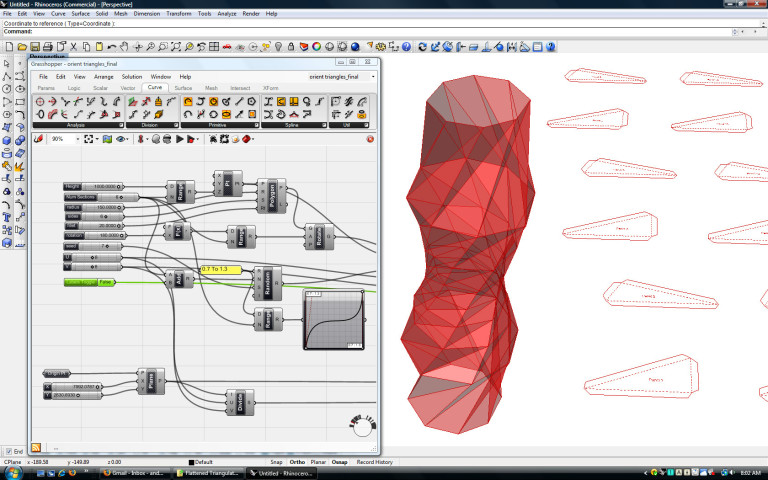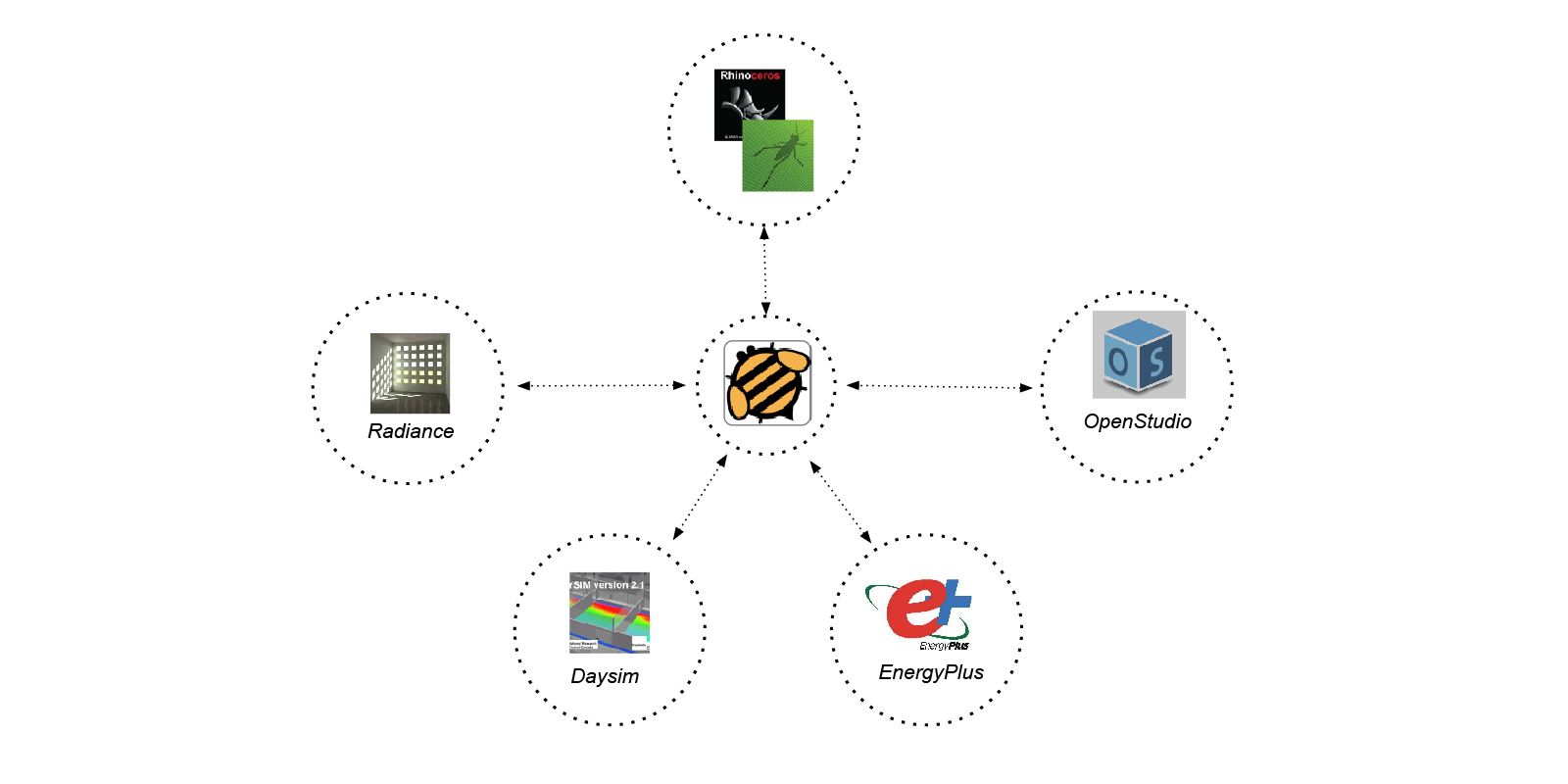As we enter a new emerging era in the field of contemporary architecture and design, there is a tremendous demand for highly customizable convoluted geometry playing vital roles in the overall form, shape, and size of the buildings. ‘Parametricism’ is not a modern term; you can check these Shapes of Parametric Design to explore more about the origins of this realm.
Back to the present; the direct outcome of such an increasingly persistent requirement for “modern” & “futuristic” forms, has paved the way for innovative new techniques and tools for today’s architect – Computer-Aided Design (CAD). It deals with the use of computing devices to abet +one’s odds of better perceiving and visualizing a design.
What is meant by parametric?
It is generally used to create, analyze, modify and finally present the design, due to the accuracy and quality, it is capable of consistently administering. Parametric design on the other hand refers to the use of parameters such as constraints, the relationships between geometric entities, dimensions, the shape and size of the entities, etc. These parameters are substantially responsible for determining the relationship between the design intent and the design response and overall, algorithmically generate the desired framework and form of the model, which is to be visualized.

Courtesy of Felipe Hernández
[irp posts=’167193′]
10 Parametric Plugins You Should Know!
The challenge of visualizing complex forms has been met with the emergence of parametric CAD plugins and software. Parametric design is by far one of the most widely used modeling processes today, for efficiently generating a wide array of similar yet complex geometrical patterns within record-breaking time constraints.
In a world that is rapidly becoming virtual, besides these Plugins, you also need the means to connect with people across the globe, here is where the best webinar software comes in handy. Some parametric plugins (for a 3D modeling tool called Rhinoceros) used actively today include Grasshopper 3D, Ladybug, Honeybee, Geco, Kangaroo Physics, Karamba, BullAnt, Hummingbird, Heliotrope-Solar, Mantis, among many others. As Rhinoceros/Grasshopper are open source, third-party developers actively develop a multitude of free plugins and add-ons for them. Let’s briefly review each of them
[irp posts=’159166′]
1. Grasshopper 3D
Grasshopper 3D is a graphical parametric form generating tool, integrated into Rhinoceros 3D. It requires no prior knowledge of programming and scripting and still allows the architects & designers to generate complex parametric forms. The dimensions of the form are subjected to constraints and can easily be altered by sliding the various parametric sliders in the Grasshopper model space[2,7].
2. Ladybug (Environmental analysis)
An open-source parametric plugin called “Ladybug” is used to support further environmental analysis inside the Rhinoceros/Grasshopper Interface. Ladybug imports standard “Energy Plus Weather” files (.EPW) into Grasshopper 3D and brings with it, a wide variety of 2D and 3D interactive graphics to conduct accurate environmental studies for the form generation of the building. It simplifies the process of analysis and automates the calculations, whilst providing easy-to-understand graphical visualizations in the 3D modeling interface of Grasshopper. It further allows users to work with validated energy and daylighting engines such as “EnergyPlus”, “Radiance” and “Days”, effectively allowing the architect to make better design choices[1,3,2,8].
3. Honeybee (Environmental analysis)
Honeybee is another parametric plugin for Grasshopper which also connects Grasshopper3D to “EnergyPlus”, “Radiance”, “Daysim” and “OpenStudio”, for building energy consumption & daylighting simulation[2,3,4].
4. Geco (Environmental analysis)
Geco allows one to export and actively collaborate effectively with another software called Ecotect, in order to evaluate one’s design with various performance data, which Geco again makes it possible to import the results as feedback, back into Grasshopper. Now, Ecotect is visual software for architects, which enables them to test environmental performance issues and simulate the various environmental and climatic conditions in order to design more green and efficient parametric structures[4].

Courtesy of grasshopper 3d
5. Heliotrope-Solar (Environmental analysis)
It is a Grasshopper plug-in for manipulating geometry based on the dynamic position of the Sun. The tool calculates the apparent position of the sun (using vector physics) at specified dates and times of the day and uses this data to compute and provide a variety of components for parametrically manipulating the design based on the position of the sun on those specified dates. It is used to create solar-aware designs, to deduce the position of rendering lights & to design shading devices for the structure[4].

The applications of ‘Ladybug’, ‘Honeybee’, ‘Geco’ & ‘Heliotrope-Solar’, in the ‘Grasshopper 3D’ environment, can be extended to generate responsive architecture (Dynamic Facades), where the building envelopes adapt to natural systems, such as the dynamic movement of the sun. Initially, the building is modeled in Rhino, oriented as it is to be built in the real world, and is subjected to a virtual Sun, which replicates the real-life conditions of the Sun.
It is then analyzed extensively at different times of the day, with respect to the Sun’s path. Next, Grasshopper 3D is used to parametrically generate the required geometry for the structure, to determine the size and orientation of openings, and to generate various shading devices and mechanisms, for each panel[3,5,8]. These panels open and close in response to the sun’s position and follow its movement throughout the day, in turn bringing in more diffused light, causing less heat gain and glare, and more importantly, cutting the cost of air-conditioning systems, inside the building.
Good examples of buildings that have implemented this technology are The Al Bahr Towers (which act as the Abu Dhabi Investment Council Headquarters), designed by Aedas and Arup, and The Arab World Institute, located in Paris, which was designed by Jean Nouvel. The panels act as a heat buffer, and also bring down carbon emissions by reducing the need for air conditioning systems, making the building sustainable, balanced and green.
These environmental analysis plugins enable architects to build much more balanced, green, and sustainable structures, by coming up with various innovations on the facades to leverage the external weather conditions to the maximum. Building envelopes act as interfaces between the natural exterior environment and the controlled interior environment. The variation of form across the façade of a building is not fabricated at random, but rather is morphed and controlled parametrically, corresponding to the environmental data[3,4].
6. Kangaroo Physics (Structural Analysis)
Structural Engineers use the Kangaroo Physics plugin inside Grasshopper for interactive real simulation, generating form, optimization, and analysis of structural components and constraint introspection.
7. Karamba (Structural Analysis)
Parametric design plugins like “Karamba”, define new horizons in the field of structural engineering. Karamba is an interactive structural analysis plugin in the parametric environment of Grasshopper 3D. This plugin makes it extremely simple to combine parameterized complex geometric forms, load calculations, finite element analysis, etc. It provides accurate analysis of spatial trusses, frames, and shells at the early design stage. The user is able to create basic ‘pin-jointed planar systems, from which graphic statics are generated and analyzed, to understand the available degrees of freedom in these systems, in order to leverage them structurally[7,8].
8. BullAnt (Structural Analysis)
It is a Grasshopper3D plug-in, primarily for Architects and Engineers. It features unique tools which enhance and extend the capabilities of the parent program. It features an array of commands including mesh relaxation & inflation, automation in symmetry, tessellation, structural analysis (modeling and sketching), and parametric generation in Grasshopper. It also features geodesic dome & curve network processing.
9. Hummingbird (Structural Analysis)
It expands Grasshopper’s capabilities by adding a set of components that help in the conversion and creation of Revit files which contain supported geometric algorithms for the Rhino modeled file. In other words, a complex parametrically designed geometry can be designed in BIM software, to make the structure much more practical, before presenting or proposing it.
Hummingbird basically allows a bi-directional workflow in between Autodesk Revit and Rhinoceros 3D, removing the need to create reference objects. This also helps in better visualizing and analyzing the structural components that are to come into the picture[8,9].
10. Mantis (Structural Analysis)
Mantis is a plugin for grasshopper which directly links Rhinoceros and Mathematica. Mathematica is a tool for technical computing, used by mathematicians, engineers, and analysts. It is renowned as the world’s best application for computations.
Structural systems are formed by the interpretation of lines, curves, and points as structural elements and forces, through custom components. All the data analyzed is then exported from Rhinoceros to a FEM (Finite Element Method) analysis software like “SOFiSTiK”. The software uses a numerical technique for finding approximate solutions to boundary value problems for partial differential equations harnessed from the prior structural analysis.
It basically breaks down a complex problem into simpler parts and then begins to calculate and solve them. This “part to whole” approach truly eliminates a large margin of error and compliments for a much more accurate structural analysis, aiding in a much more robust, stable, and balanced parametrically designed structure.

Courtesy of archi star
Such parametric design software and plugins also enable the user to instantaneously generate a wide spectrum of dynamic forms simply by inputting various magnitudes & assigning suitable constraints. This ability to perceive alterations made in real-time, allow the architect to generate complex form, which otherwise may not have been thought about due to the sheer complexity in the form, shape, or structure of the design.
The mentioned tools & plugins are extremely user-friendly and require a basic understanding of 3D modeling principles to get started with. The cavernous gaps in between the fields of collaborative architecture, environmental studies, and structural engineering, are addressed and bridged. They integrate parametric design with statistical analysis into a single modeling envelope, making the building more practical, unique, dynamic, balanced, and sustainable – for a much more green future.
- [1] “Ladybug: A Parametric Environmental Plugin for Grasshopper to help designers create an environmentally-conscious design”, (Pg nos. 3128, 3130) Mostapha Sadeghipour Roudsari, Michelle Pak Adrian Smith + Gordon Gill Architecture, Chicago, USA http: / /www.ibpsa.org/proceedings/BS2013/p_2499.pdf
- [2] “Paneling Tools for Grasshopper”, (Pg nos.3-89) (to understand the various complex geometries the tools enable it to generate & model), Rajaa Issa, Robert McNeel & Associates. http://wiki.mcneel.com/_media/labs/panelingtools4grasshopperprimer.pdf
- [3] “Integration of Outdoor Thermal and Visual Comfort in Parametric Design” (Pg nos. 1, 3, 9) Emanuele Nabonii. http://www.plea2014.in/wp-content/uploads/2014/12/Paper_3B_2882_PR
- [4] “Daylight Optimization: A Parametric Study of Atrium Design”. (Pg 1, 3)
- [5] “ Performative Parametric Design of Radiation Responsive Screens”, (Pg nos. 580, 582) Henry Marroquin, Mate Thitisawat and Emmanouil Vermisso. https://www.brikbase.org/sites/default/files/ARCC2013_UNCC_Conference_Proceedings_597.pdf
- [6] “Form Finding, Force and Function: Mass-Spring Simulation for a Thin Shell Concrete Trolley Barn“, Michael W. Weller. http://dmg.caup.washington.edu/pdfs/MArch.Thesis.MikeWeller.2011.pdf
- [7] “Optimizing a Trussed Frame Subjected to Wind Using Rhino, Grasshopper, Karamba, and Galapagos”, Evan J. Gerbo, Edmond P. Saliklisa. http://content-calpoly-edu.s3.amazonaws.com/arce/1/people/documents/Genetic%20Algorithm%20Paper%20v4.pdf
- [8] “Parametric Tools & The Evolving Design Process”, Liam Taylor. http://www.aceuoa.org.nz/resources/Parametric_Design_Presentation_Slides.pdf
- [9] “Bio-Origami, Form finding and evaluation of origami structures,” Daniel Baerlecken, Matthew Swarts, Russell Gentry, Nixon Wonoto. http://cumincad.architexturez.net/system/files/pdf/ecaade2012_250.content.pdf


























